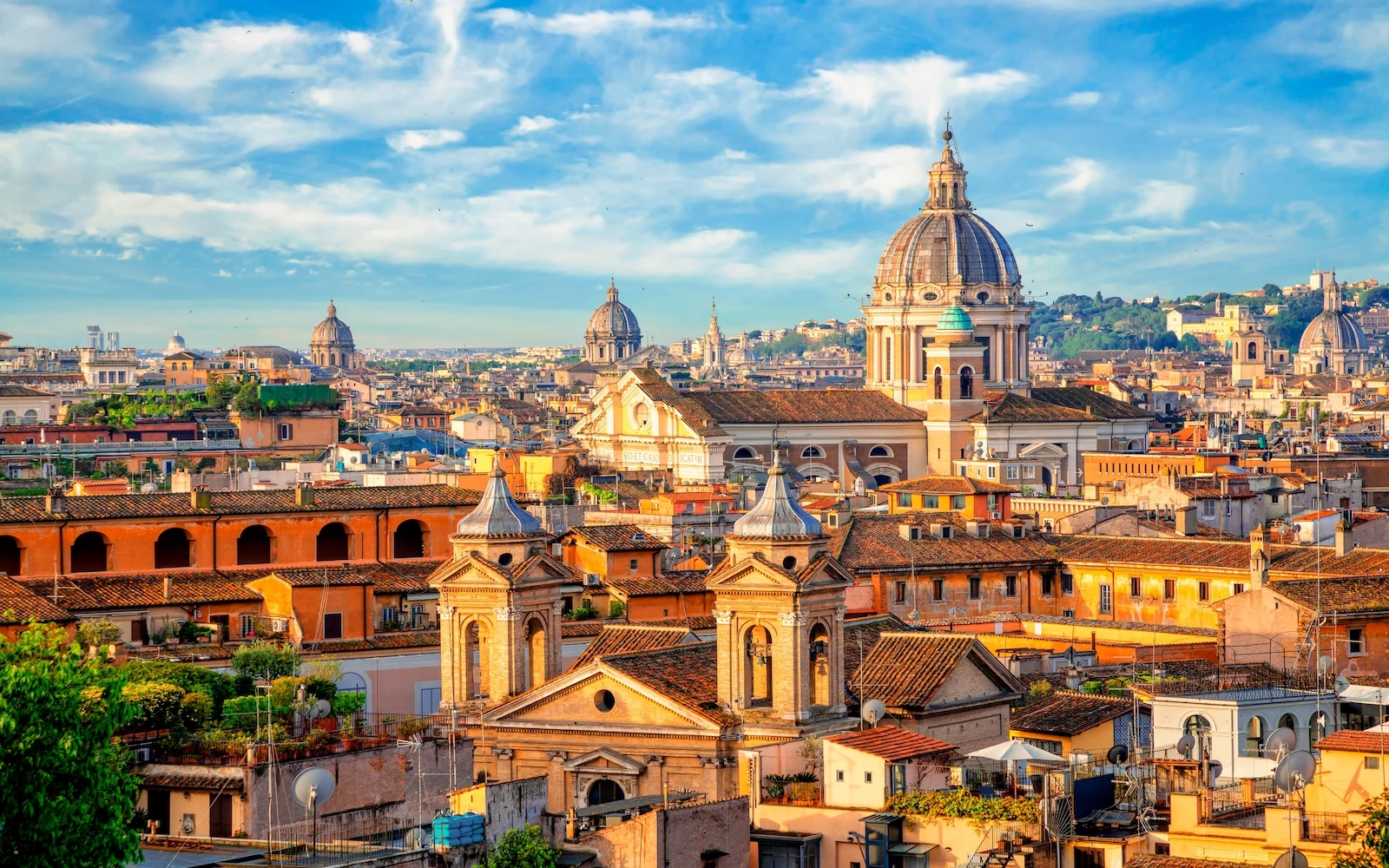Mention Italy, and what comes to mind first is probably her cuisine and unique attractions. Yet the country is so much more than just food and culture.
Italy has a unique charm that it seems many people just cannot get enough of. And once you find out more about the Republic of Italy, we think you will agree.
25 Fun Facts About Italy
Italy is perhaps one of the best-known countries in Europe. Nevertheless, there’s a lot the average person doesn’t know about it. Here are a few interesting facts you can wow your friends with.
1. It has Only Been a Country Since 1861
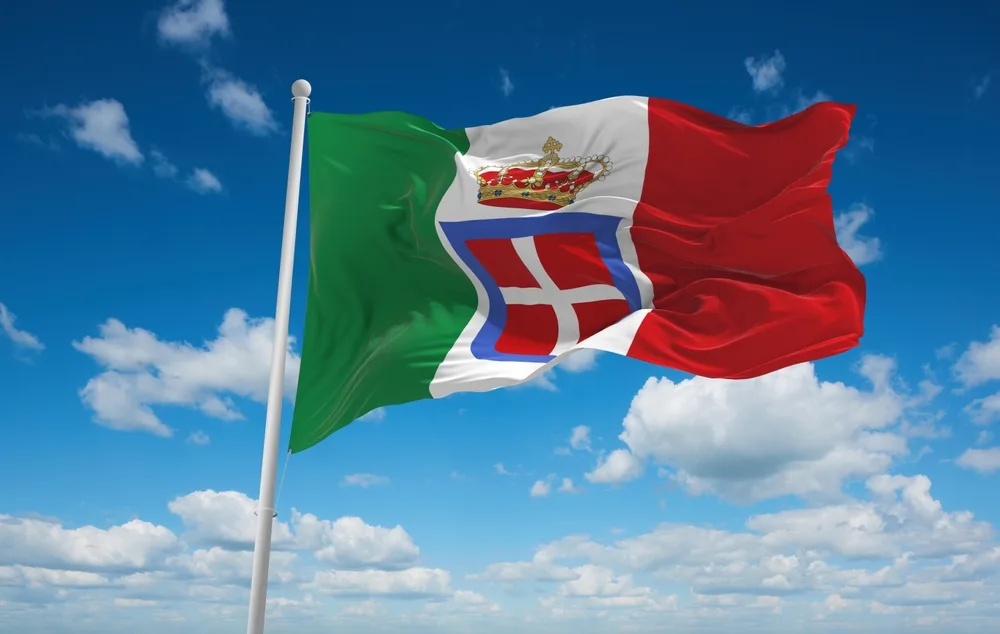
Maxim Studio/Shutterstock
Although Rome was around more than 2,000 years ago, Italy has only existed as its own distinct nation since 1861. The Kingdom of Italy was established on March 17, 1861, with Sardinia’s Victor Emmanuel II being crowned its first king.
2. Italy’s Republic Form of Government was Only Established in 1946
From its inception in 1861 until 1946, Italy was a kingdom. Its last king, Umberto II, ruled only 34 days before stepping down on June 12, 1946. The election that ushered in the Italian Institutional Referendum on Abolishing the Monarchy was the first one in which Italian women were allowed to vote.
3. There are 20 Distinct Regions
Each of Italy’s 20 regions are autonomous, self-governing entities. Each has its own statute that serves as its “regional constitution”, which is enforced by a local parliament or regional council. Every region is further divided into provinces that have their own capital as well.
According to Italian law, these 107 provinces are officially classified as “institutional bodies of second level.”
4. It’s About the Size of Arizona
Italy spans approximately 116,350 square miles, which equals around 301,340 square kilometers. This makes it approximately the same size as the U.S. state of Arizona. It ranks 11th in size among European nations, and is just slightly bigger than the United Kingdom.
5. The Roman Empire Once Covered More than 2.3 Million Miles
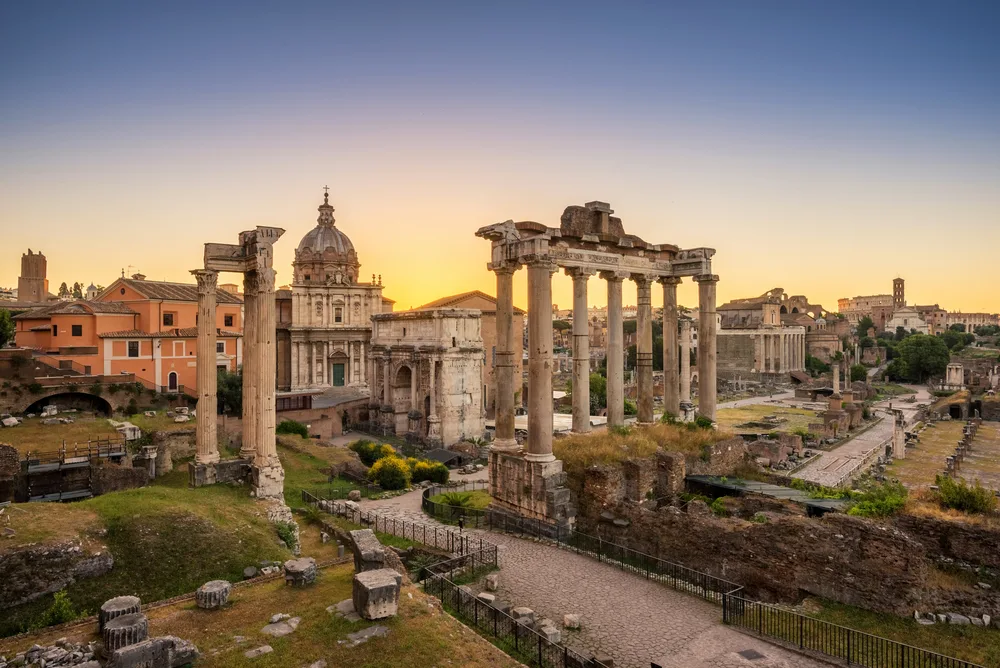
martinho Smart/Shutterstock
Italy may be a very small country today. Even so, the Roman Empire once spanned more than 2.3 million square miles in area. During its peak around 117 A.D., the Empire stretched from Britain in the north to the deserts of North Africa in the south.
6. Vatican City, Located Entirely Within Rome, is Actually its Own Country
Officially known as the “Vatican City State”, it’s home to top attractions like St. Peter’s Basilica, Sistine Chapel, and Vatican Gardens. All this and more is contained within approximately 120 acres, making Vatican City the smallest nation-state in the world.
7. San Marino is Another Microstate That is Fully Contained Within Italy
Covering a mere 24 square miles (61 square kilometers), The Republic of San Marino sits approximately six miles (10 km) off the Adriatic Coast. San Marino has no airports of its own, so visitors must fly into an Italian airport in Venice, Rimisi, Bologna, or Rimini instead.
8. More UNESCO World Heritage Sites are Located in Italy Than any Other Country in the World
The United Nations Educational, Scientific and Cultural Organization (UNESCO) has identified more World Heritage Sites in Italy than in any other nation in the world. In all, Italy has 58 World Heritage sites, including the newly-named karst-cave system in the Northern Apennines.
9. Italy is the World’s Largest Wine-Producing Nation
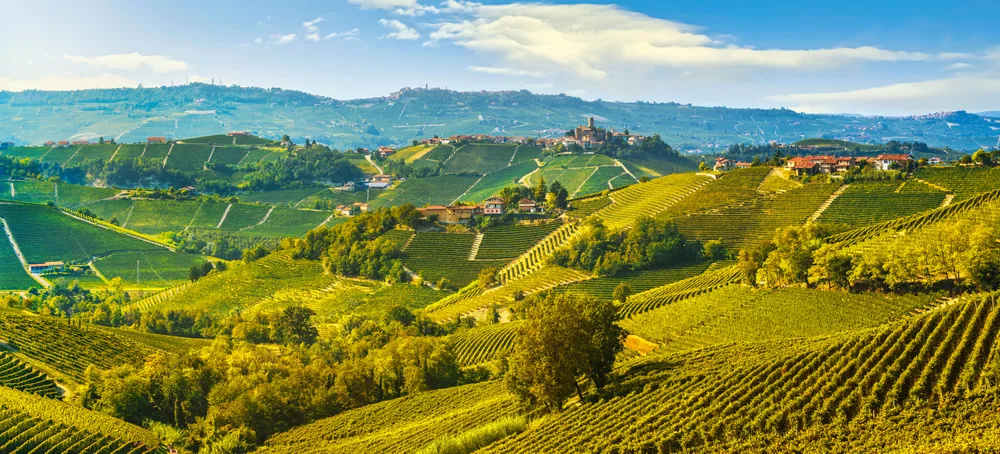
StevanZZ/Shutterstock
Producing nearly 50,000 hectoliters of wine each year, Italy is responsible for 19.3% of the world’s wine production.
Italy is second only to France, which provides around 17% of the globe’s wine. In all, enough of the sparkly beverage comes out of Italy to fill nearly 2,000 Olympic-sized swimming pools each year.
10. Free Wine has Flowed from a Fountain in Vilda Cardari for more than 100 Years
Since the late 19th Century, red wine has been flowing from the Fontana del vino, a legendary fountain located in Villa Caldari. The fountain sits in front of the historic Stazione train station and spews wine from the local Dora Sarchese winery.
Italians have deemed it a national landmark, but not everyone is invited to partake of the free wine. In fact, drunkards and louts are expressly prohibited.
11. Italy is the Only European Country with Active Volcanoes
Italy is actually home to dozens of active and extinct volcanoes and is the only nation in Europe to claim any volcanoes at all.
Among Italy’s active volcanoes are Mount Etna (the continent’s largest active volcano), an island volcano called Stromboli, and Mount Vesuvius, which was responsible for burying Pompeii in 79 A.D.
12. Italians Drive on the Right Side of the Road
Most people associate Europe with left-side driving. However, Italy and most of Europe have been driving on the right-hand side of the road since the early 20th Century. Even so, right-hand turns at a red light are always prohibited regardless.
13. It’s Against the Law to Eat Outdoors in Rome’s Historic District

Rome, Italy – September 11, 2015: Unidentified people eating traditional italian food in outdoor restaurant in Trastevere district in Rome, Italy./Mazur Travel/Shutterstock
In an effort to preserve historic sites and cut down on what the city claims is unsociable behavior, Rome’s city council has instituted a ban on food and drinks within the areas surrounding the Trevi Fountain, the 18th Century Spanish Steps, and the Colosseum, among others.
The law was enacted partly because many historic monuments and fountains were allegedly damaged by rogue tourists carelessly spilling things on them.
14 Trevi Fountain in Rome Collects More than $1.58 Million Each Year
Rome’s iconic Trevi Fountain is more than just one of the city’s most-visited attractions, as it is also a huge money maker.
In all, tourists throw more than €1.5 million ($1.58 million in US dollars) in loose change into the fountain each year. Those funds are collected under the watchful eye of police before being handed over to Catholic charities.
15. The World’s Longest Tunnel Runs between Switzerland and Italy
Linking Italy and Switzerland, the Lotschberg Base Tunnel is the longest underground tunnel in the world. It spans more than 57 km or 22 miles. Although it’s a rail tunnel, auto transport is offered via special, open-sided transport cars.
Drivers remain inside their vehicle atop the transport car for the approximately 20-minute, one-way trip.
16. The Fork First Became Mainstream Thanks to Italians
The fork made its Italian debut in 1004 A.D. during a royal wedding in Venice. At the time, the bride’s two-pronged fork was deemed scandalous.
The controversy didn’t last long though. Once Italians discovered how easy it was to twirl spaghetti around fork tines, it became a household staple there.
17. The Country is Surrounded by 5 Different Seas
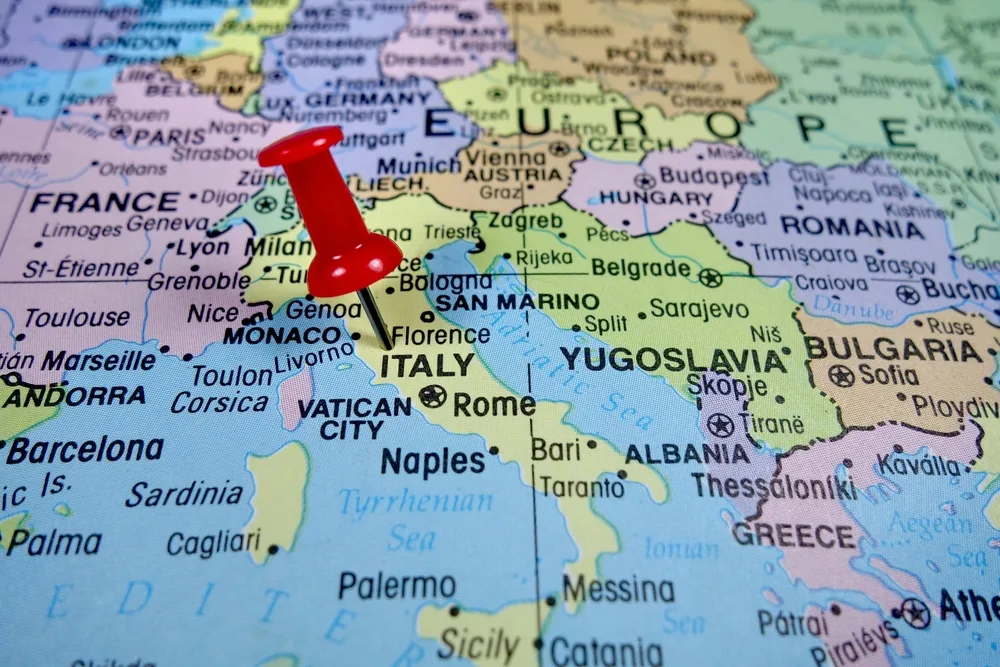
Tuangtong Soraprasert/Shutterstock
The Ionian Sea, Tyrrhenian Sea, Mediterranean Sea, Adriatic Sea, and Ligurian Sea all border Italy. All told, these oceans provide more than 4,700 miles of coastland, giving Italy some of the most breathtaking beaches in the world.
18. Residents of Certain Areas are Known for their Longevity
Italy’s Sardinia Island is the second-largest in the Mediterranean Sea, and one of only five areas of the world designated a “blue zone.” A blue zone is one in which people tend to have less chronic disease and also have very long lifespans.
Statistically speaking, 22 out of every 100,000 Sardinians are age 100 or older, while 20% of Italy’s overall population is age 65 or older.
19. Tourism Accounts for a Large Percentage of the Country’s Economy
Italy is the fifth-most visited country in the world and welcomes more than 65 million tourists each year. It’s often said that tourism accounts for more than half of Italy’s economy. Some economists even rank Italy fifth in the world as far as international tourism goes.
20. Christopher Columbus was Actually an Italian
Although he sailed under the Spanish flag, Christopher Columbus was actually an Italian. Columbus was born and raised in what was then known as “The Republic of Genoa” on Italy’s northwest coast. A reconstructed version of his childhood home still stands.
21. Many Italians Celebrate Their “Name Day”

DavideAngelini/Shutterstock
At least those named after a saint do. Known as onomastico, it involves celebrating a particular day that’s associated with a saint. Many Italians know these saint days by heart and consider them just as important as someone’s birthday.
22. Leisurely Strolls are a Time-Honored Tradition
Leisurely strolls, referred to in Italy as fare una passeggiata, are a way of life for many Italians. They involve casually walking around the town’s square mingling with others and occasionally window shopping.
Often beginning in early evening, Italians often continue the fare una passeggiata after dinner to aid with digestion.
23. Children Often Live at Home Well Into Their 30s
Italians value their families so much that it’s not unusual to have multiple generations living under one roof. Actually, unmarried children often live at home with their parents (and sometimes their grandparents as well) even into their 30s.
They may be known for their large families, but Italians nonetheless have one of the lowest birthrates of any nation on earth.
24. Venice Consists of 118 Small Islands
Often referred to as the “floating city”, Venice is actually 118 small islands linked together by more than 150 canals and over 400 bridges.
Most buildings in Venice are constructed on wooden platforms that sit over top of tree trunks, thereby giving them the illusion of floating.
25. Nearly 300,000 Cats Live in Rome
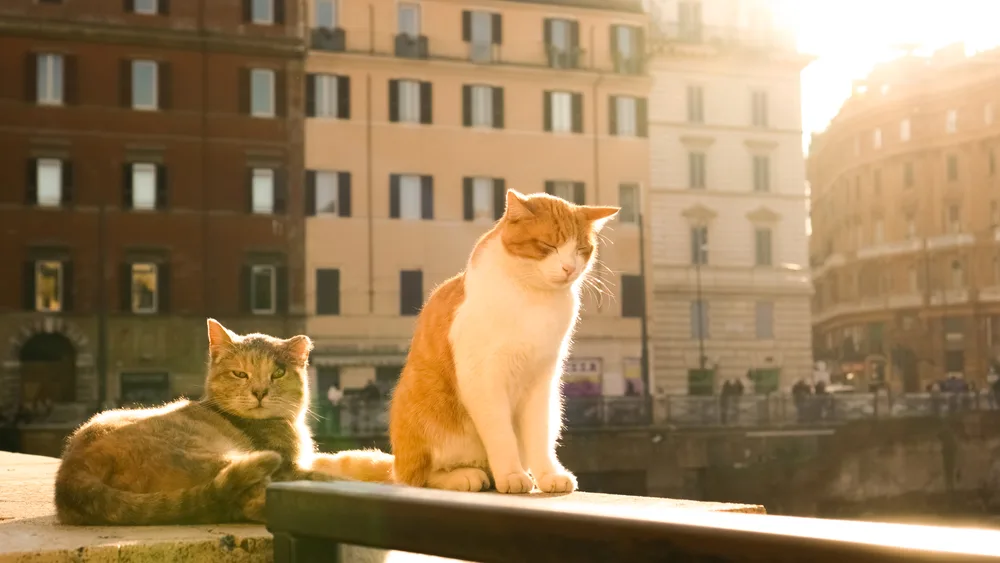
Rill/Shutterstock
Of those, approximately 180,000 are family pets, and the remainder are feral cats living in one of the city’s 4,000 registered cat colonies.
Romans hold felines in high regard, and there are stiff penalties for harming one of these animals. In fact, Rome’s city council has claimed that feral cats are part of its ‘bio-heritage.’
Frequently Asked Questions
What months are ideal for an Italian vacation?
The spring and autumn seasons bring pleasant temperatures, fewer crowds, and more economic travel. To take advantage of these conditions, schedule your trip for the months of May-June or September-October.
What does a U.S. citizen need before visiting Italy?
Beginning in 2024, U.S. citizens will need to obtain authorization through the European Travel Information and Authorisation System (ETIAS). Verification is valid for up to 3 years or until your U.S. passport expires, whichever comes first.
Does Italy currently have any Covid restrictions?
Effective June 1, 2022, so-called “green” COVID-19 certificates are no longer required for anyone traveling throughout the European Union. But this situation is subject to change, so you should always verify requirements beforehand.
Is Italy open for tourism right now?
Yes! Italy is currently welcoming tourists from around the globe. Before traveling, visit the Italian Ministry of Foreign Affairs for the latest guidance for entering and exiting the country.
How many days should I vacation in Italy?
You can experience many of Italy’s finest attractions during an extended weekend. However, if you would like to explore multiple regions and get a taste of the culture as well as the landscape, plan on staying a week or more.
Over to You — Book Your Trip to Italy Today!
So, with so much to see and do, what are you waiting for – book your trip today and experience for yourself all that Italy has to offer. Happy travels!



